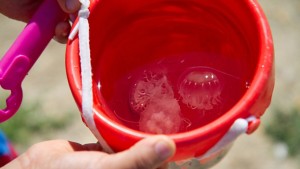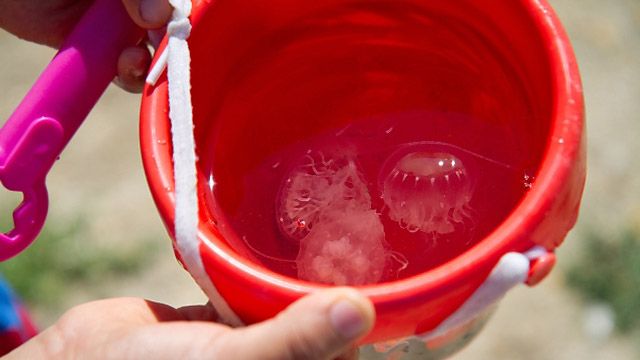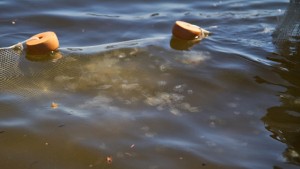
A global explosion in jellyfish populations is raising alarm in the scientific community around the world. The proliferation has threatened to shut down power plants in Israel and has tripped up commercial fishing operations in Japan.
In Barnegat Bay, separated from the Atlantic Ocean by the Barrier Islands of the New Jersey shore, the consequences are a bit more mundane: swelling numbers of stinging sea nettles over the past decade has made swimming on some beaches impossible, and bayside homeowners are complaining that rentals are down.
Teams of researchers are mapping the DNA of the small, saucer-shaped sea nettles, and collecting water samples to track the conditions in which they do best. But they are also trying to answer a more basic question: how much populations are actually growing.
This summer, researchers with the Barnegat Bay Partnership began screening local beaches with a fifty-foot net four times a week to establish population numbers. In the largest haul, they captured (and threw back) an estimated 1,400 sea nettles in one sweep.
"It tells us that things have changed, that something's out of balance, something is out of whack," said Jim Vasslides, a scientist with the environmental group.

